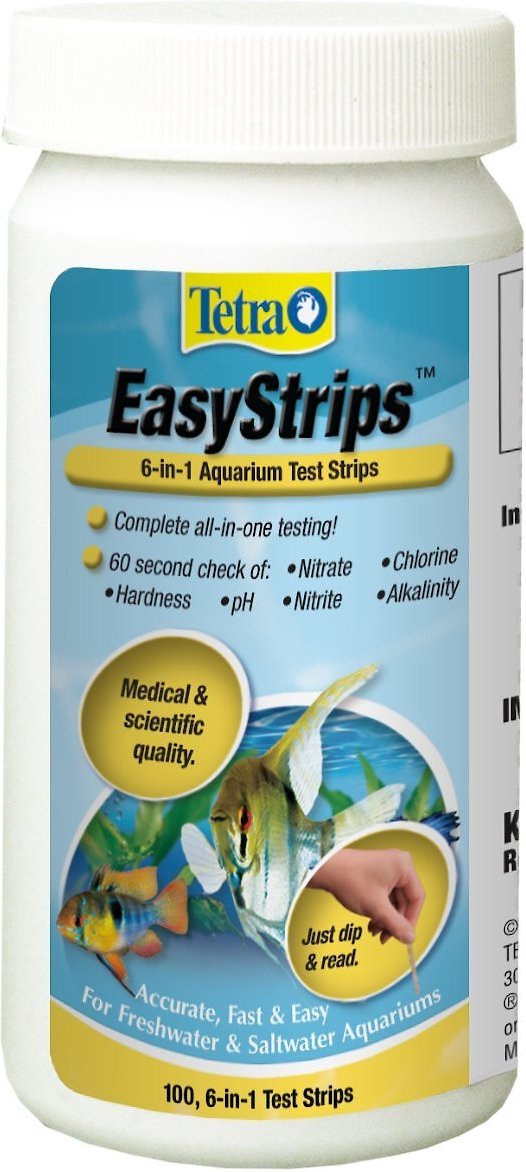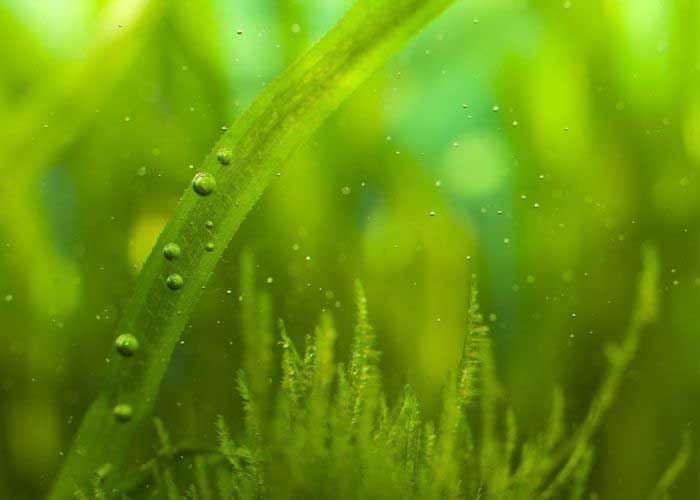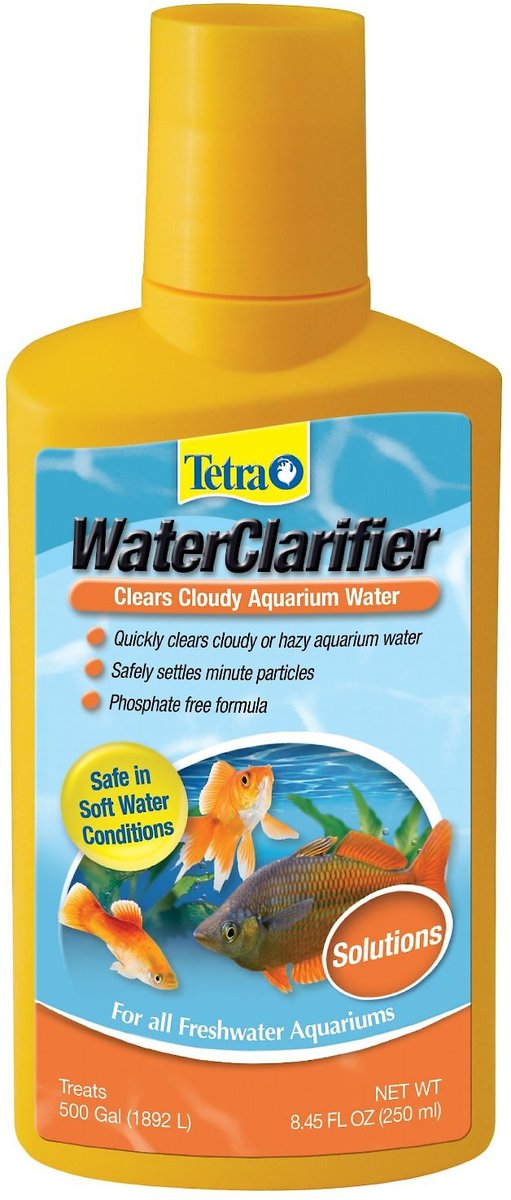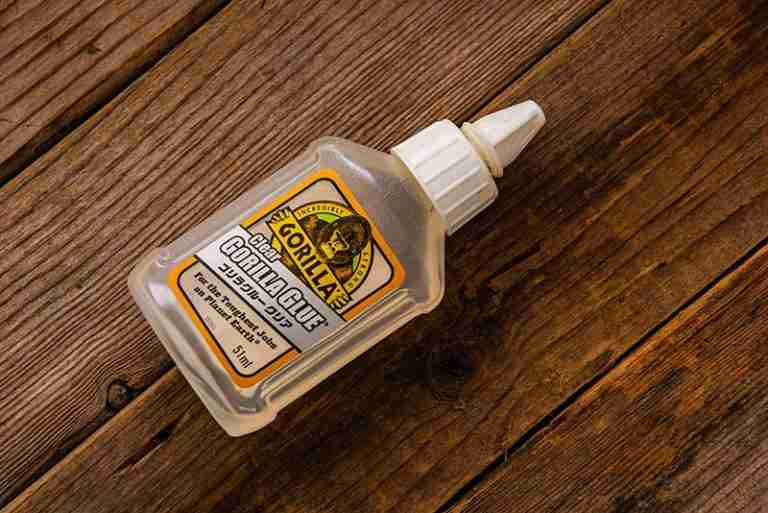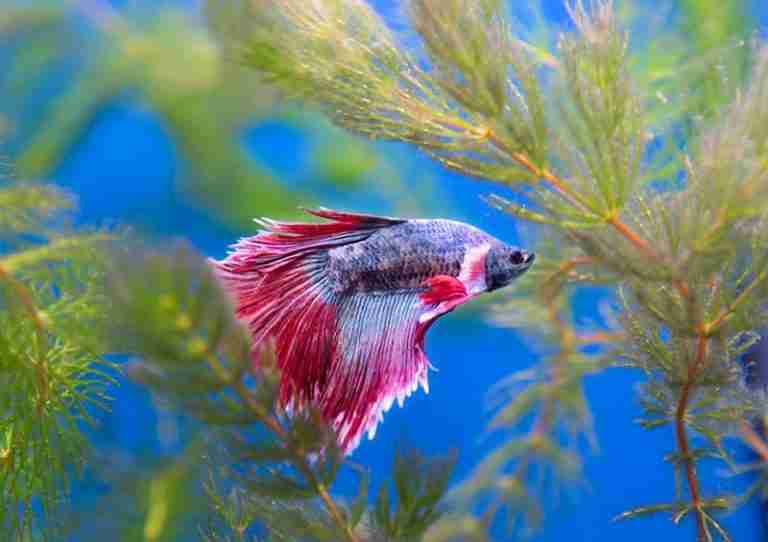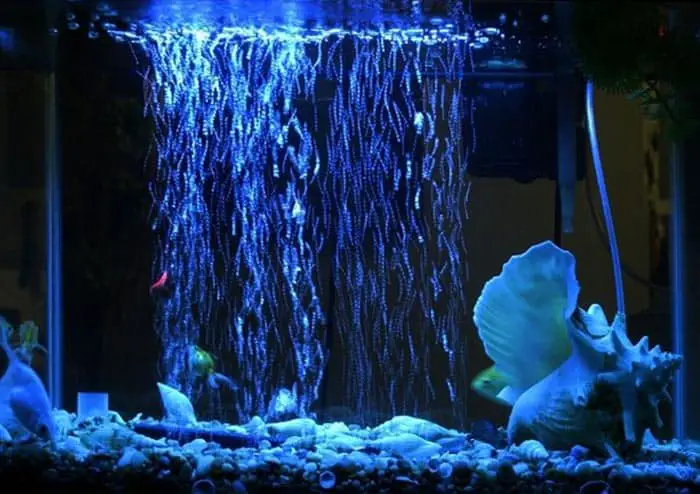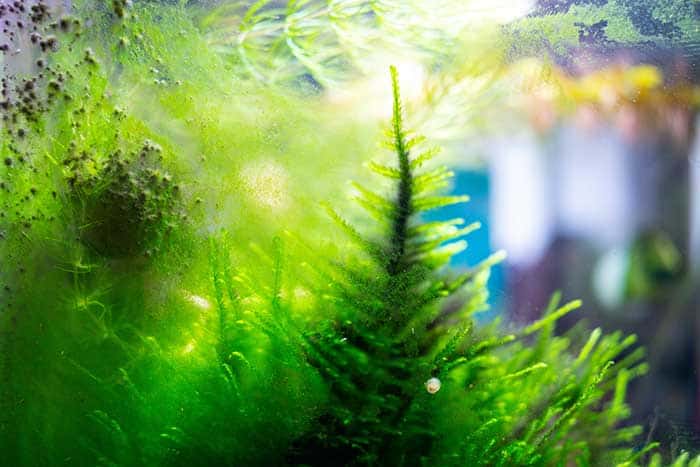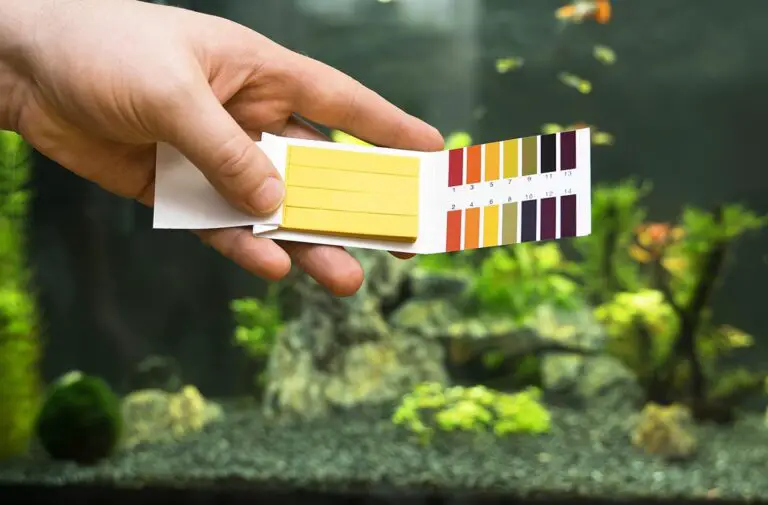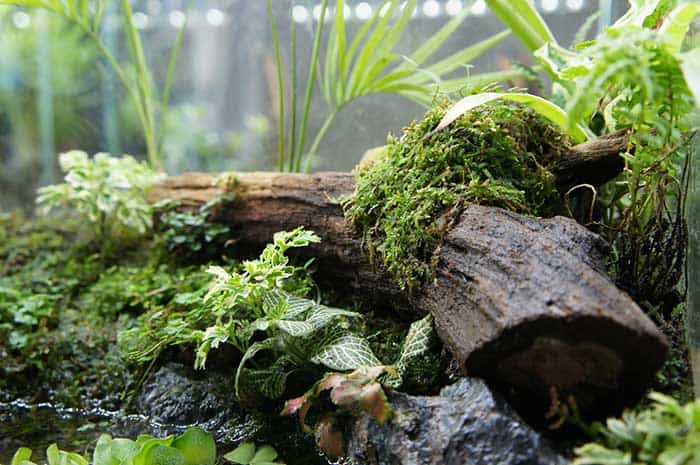Why Is My Fish Tank Cloudy After Water Change (& Solutions)
Keeping a fish tank clean is pleasing aesthetically and contributes to the good health of your fish. Water changes are the easiest way to keep your water clean and healthy, but sometimes it may cause your fish tank water to become cloudy and look worse than it did initially.
Cloudy fish tank water can sometimes be caused by changes that can cause a slight imbalance in your tank’s water chemistry, or you may kick up some dirt or sediment in the substrate. Bacterial blooms can also cause cloudy water after a water change.
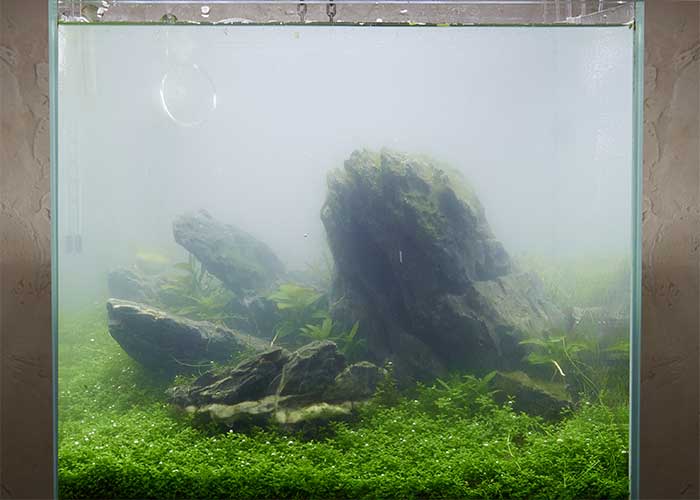
There are many reasons why fish tank water can become cloudy, but this short article will specifically answer the question, “Why is my fish tank cloudy after water change?”
Cloudy Water After Water Change (Common Reasons)
Many aquarium hobbyists have experienced cloudy aquarium water after a water change, and you can find some of the most common causes below:
- Fresh water added too quickly (and from too high), causing a mini fish tank tsunami.
- You disturbed the sediment/dirt at the bottom of your fish tank while doing the water change.
- Adding untreated water, causing a change in water chemistry.
- Your fish produce too much waste, making your fish tank go through a mini-cycle and causing a bacterial bloom.
- An algae bloom is making your fish tank water green and cloudy.
There are many other potential causes of cloudy fish tank water, but these are some of the most common ones. If you can identify the cause of your cloudy fish tank, then you can take steps to fix the problem.
Cloudy water generally won’t cause your fish any problems, but if the cloudiness is caused by poor water quality or changes to the water parameters, these can cause problems with the health of your fish. You can read more about it in my article: Will Cloudy Water Hurt My Fish.
Adding Water Too Quickly Can Cause Cloudy Water
The most common reason for cloudy aquarium water when performing a water change is simply adding too much water, too quickly, and from a height.
If you add the fresh water too quickly or from too high, it can cause a strong current beneath the water, which kicks up dirt, sand, and other debris from the substrate, which floats in the water, making it appear cloudy.
To avoid this, add the fresh water slowly and carefully so that you don’t cause too much of a current. Try to pour the water at an angle, against the glass, rather than directly into the fish tank.
You can also use a turkey baster or similar to add the water slowly and carefully.
Disturbed Sediment And Dirt Can Cause Cloudy Fish Tank Water
As described above, sediment and dirt kicked when doing a water change can cause the fish tank water to become cloudy.
The main reason for sediment and dirt to get kicked up is the velocity at which the water is added, but other factors can cause this to happen.
Gravel vacuuming can disturb the sediment. In fact, gravel vacuuming is meant to disturb the sediment, so trapped food and waste particles can be released and sucked up. Gravel vacuums are very good at removing waste from the tank, but they don’t catch every particle, and once it has been disturbed, it freely floats around the tank.
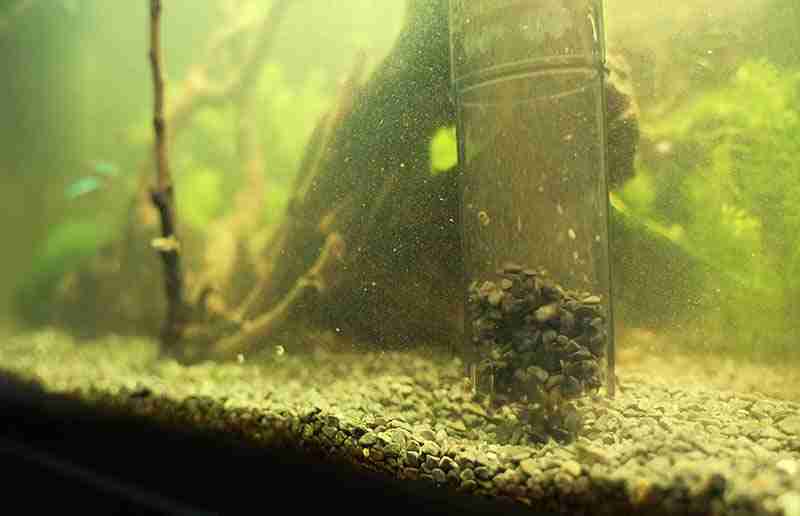
After performing a thorough gravel vacuum, you may experience cloudy water for 30 to 60 minutes before the sediment settles.
A filter with a strong flow rate can also contribute to fine sediment particles flying around the tank after a water change. Very fine sediment particles may not be trapped by the filter and will struggle to settle on the bottom of the tank if the filter is creating a strong current.
A simple fix to a strong filter is to either turn it off until the sediment settles, raise it out of the water slightly to reduce the current, or direct the filter flow nozzle toward something that can defuse the strong flow.
If you are interested, I have an article that explains the process of cleaning gravel without a vacuum, which also covers some good practices, such as not overcleaning. Too much cleaning kills good bacteria and causes a cloudy bacterial bloom. The article is: How To Clean Fish Tank Gravel Without A Vacuum (In 4 Steps).
Adding Untreated Water To Your Tank Can Cause It To Become Cloudy
Water changes are usually performed by siphoning water from the fish tank and adding fresh, clean water. The water you add to the fish tank should be of the same temperature and pH as the water you removed.
It would be best to use a water conditioner to remove any chlorine or other chemicals from the fresh water before adding it to your fish tank.
High levels of dissolved minerals such as phosphates, silicates, nitrates, and heavy metals can all cause cloudiness to fish tank water, so if you add untreated water high in these compounds, you may notice some hazy, cloudy water for a short while afterward.
Unlike with sediment, the cloudiness has a white milky appearance when caused by chemicals in the water. You need to be aware that some chemicals can be hazardous to fish at high levels.
You should always be aware of the chemical makeup of the water you are using when performing water changes, and using a water test kit such as the one below is quite easy.
Tetra EasyStrips 6 in 1 Freshwater And Saltwater x 100 Test Strips
Tetra EasyStrips are simple to use and measure 6 of the most common water parameters in freshwater and saltwater aquariums.
Simply dip a test strip into the aquarium water and compare the color change to the included color chart for an accurate result.
This test kit of 100 strips measures chlorine, nitrate, nitrite, general hardness, alkalinity, and pH.
Adding a suitable water conditioner will also safeguard against chemicals such as chlorine from entering your tank and help reduce the number of heavy metals in the water.
The water conditioner that I use most often is by API (below).
API Tap Water Conditioner
Treat your tap water and help to provide a safe environment for your fish with API Tap Water Conditioner.
Chlorine and heavy metals found in tap water can cause gill damage, breathing difficulty, and stress, ultimately hurting or killing your fish.
Tap water also contains ammonia-causing chloramines, which can also be toxic.
API Tap Water Conditioner helps to remove these toxins from tap water.
Because it is super concentrated, you only need one teaspoon to treat 10 gallons. Best of all, it’s safe for all aquatic life and can be used in fresh and saltwater.
Bacterial Bloom After Water Change
When your fish produce too much waste, you inevitably get a bacterial bloom which is nature’s way of coping with the problem. Certain bacteria are responsible for feeding on the ammonia produced by rotting waste. If there is too much waste for the bacteria to handle, the bacteria multiply very quickly until there is enough to cope.
A sudden increase in bacteria is known as a bacteria bloom and happens when you cycle a fish tank for the first time. An established aquarium won’t usually suffer from this problem, although when performing a water change, you may disturb so much waste that a bacterial bloom inevitably develops within just 1 or 2 days.
Although bacterial blooms are harmless to fish, if caused by excess ammonia, your fish may begin to suffer from inflamed gills and difficulty breathing. If you notice your fish swimming at the top of the tank more often than usual, it would be wise to test the ammonia level and take immediate action if too high.
Your tank will settle down quite quickly after the bacterial level is enough to break down the waste.
Fish tanks struggling to keep on top of the waste produced by the tank occupants may need an emergency cycle to encourage bacteria growth manually, or you may have too many fish. Ideally, reduce the number of fish in the tank or get a bigger tank.
An Algae Bloom Can Cause Cloudy Water In A Fish Tank
Green cloudy water can be caused by an algae bloom which can be aggravated after a water change. One of the most common causes of algae growth is when the fish tank gets too much light.
Fish and plants require a minimum of 6-8 hours of darkness as they would get in their natural habitat. Algae organisms use photosynthesis to grow, so too much light causes an overgrowth.
Algae also feed on high levels of nutrients in the tank, which can be kicked up from the substrate during a water change, giving the algae an easy food source to cause a rapid bloom.
Leftover food, dead plants, and any organic materials can lead to rising ammonia levels, reducing the water quality and feeding the algae organisms.
Algae also feed on oxygen, reducing the amount of dissolved oxygen available for your fish to breathe.
Algae blooms are easily identifiable because of the green water or, in some cases, brown water, which looks quite murky.
How To Fix Cloudy Water After Water Change
So you have just performed a water change, and your water is cloudy. What are the best steps to fix cloudy aquarium water?
After a water change, most of the cloudiness should settle by itself within a day, especially if it is just a bacterial bloom or disturbed sediment. Bacterial blooms feed on tiny particles of dissolved organic compounds. The free-floating bacteria making your aquarium water cloudy begin to die when their food source runs out.
Turning off the tank filter for a few hours or diffusing the filter flow helps the sediment settle back to the bottom much more quickly.
Bacterial blooms are common, mostly during a fish tank cycle, and disappear as the water parameters stabilize.
If you are experiencing algae blooms after a water change, the best course of action is to perform another partial water change to remove as much waste as possible along with some of the algae. It would be best if you also kept the tank light off throughout the night so as not to encourage more algae growth.
If you have live plants, they will need regular cleaning to prevent algae from building up on them, which can become quite difficult to remove without using a chemical dip.
If you have a tank filter that is not removing the smaller particles from the water which are feeding the algae, you can add an extra layer of finer filter media inside the filter housing, which should trap these very fine particles.
Feeding your fish less food less often is another way to reduce organic waste buildup. Uneaten food and fish poop are major causes of spikes in ammonia which can cause bacterial blooms. Ammonia is also very toxic for your fish, it encourages algae growth and reduces oxygen levels in the tank.
I personally encourage 2 days of fasting (non-feeding days) for most fish as it aids in digestive health and enables the biological cycle of the tank to get on top of waste build-up.
Are Water Clarifiers Safe For Fish?
You may consider a water clarifier if you regularly struggle with cloudy or hazy water, especially after a water change. However, many people report that these are unsafe for fish.
Many reputable brands of water clarifiers on the market are designed to bind with the particles in the water and make them large enough to be trapped by your filter media.
Provided you purchase a clarifier from a well-known manufacturer, they are usually phosphate-free and fish safe. Water clarifiers wouldn’t be cleared for sale if they were harmful to fish. After a water change, most fish die because of a dramatic swing in water parameters caused by a water change carried out incorrectly.
If you want to try a water clarifier, I recommend purchasing from a company such as Tetra, Fritz, or API.
I have listed 3 of the best water clarifiers for freshwater aquariums below.
Fritz Water Clarifier
Fritz Clarifier Aquarium Water Conditioner rapidly cleans your aquarium for crystal-clear water and healthier creatures.
This clarifier binds together fine particles, aiding in their removal by your filter, or they settle at the bottom of the tank.
It’s safe and effective for freshwater, saltwater, reef aquariums, and ponds. It won’t harm your fish or plants and won’t contribute to cloudy water problems.
It even improves the efficiency of your filter, keeping your tank looking fabulous.
API Accu-Clear Freshwater Clarifier
Help clear up green or cloudy water caused by gravel and other floating particles quickly and safely with API Accu-Clear Freshwater Clarifier.
Specifically formulated for freshwater aquariums, this liquid clarifier combines tiny particles together to form larger clumps so they can settle at the bottom or be removed by your aquarium filter.
Water should clear within several hours. If cloudiness persists, another dose can be applied after 24 hours. Doses can also be administered weekly as part of your routine maintenance.
Tetra Freshwater Clarifier
Clear cloudy aquarium water quickly with Tetra Water Clarifier – Freshwater Aquarium Water Conditioner.
Cloudy aquarium conditions are caused by overfeeding, gravel sediment, and other particles. Tetra Water Clarifier clumps these particles together to form larger masses that can be removed during normal filtration or gravel cleaning.
It’s phosphate-free and safe for use in freshwater aquariums.
Wrap Up
There are many reasons for cloudy tank water, which can be left for another article. However, the reasons you may experience cloudy water after a water change are much more limited and easier to pinpoint.
Hopefully, the tips I provided above will guide you when identifying the cause of your cloudy water.
Milky water is usually caused by bacterial blooms, which are mostly harmless to fish, but some chemicals and minerals that cause milky water, are harmful.
It would help if you carried out water changes correctly, treating the fresh water with conditioners designed to reduce minerals and other harmful chemicals before adding it to your tank.
Water temperature should match your tank’s water, pH levels should be around the same, and if the tap water is too hard, it will need to be softened.
Add the new water to your tank gently to avoid disturbing the substrate too much. Gently adding the water reduces the formation of strong currents, which kick up remaining dirt or sediment, adding to the tank’s cloudiness.


